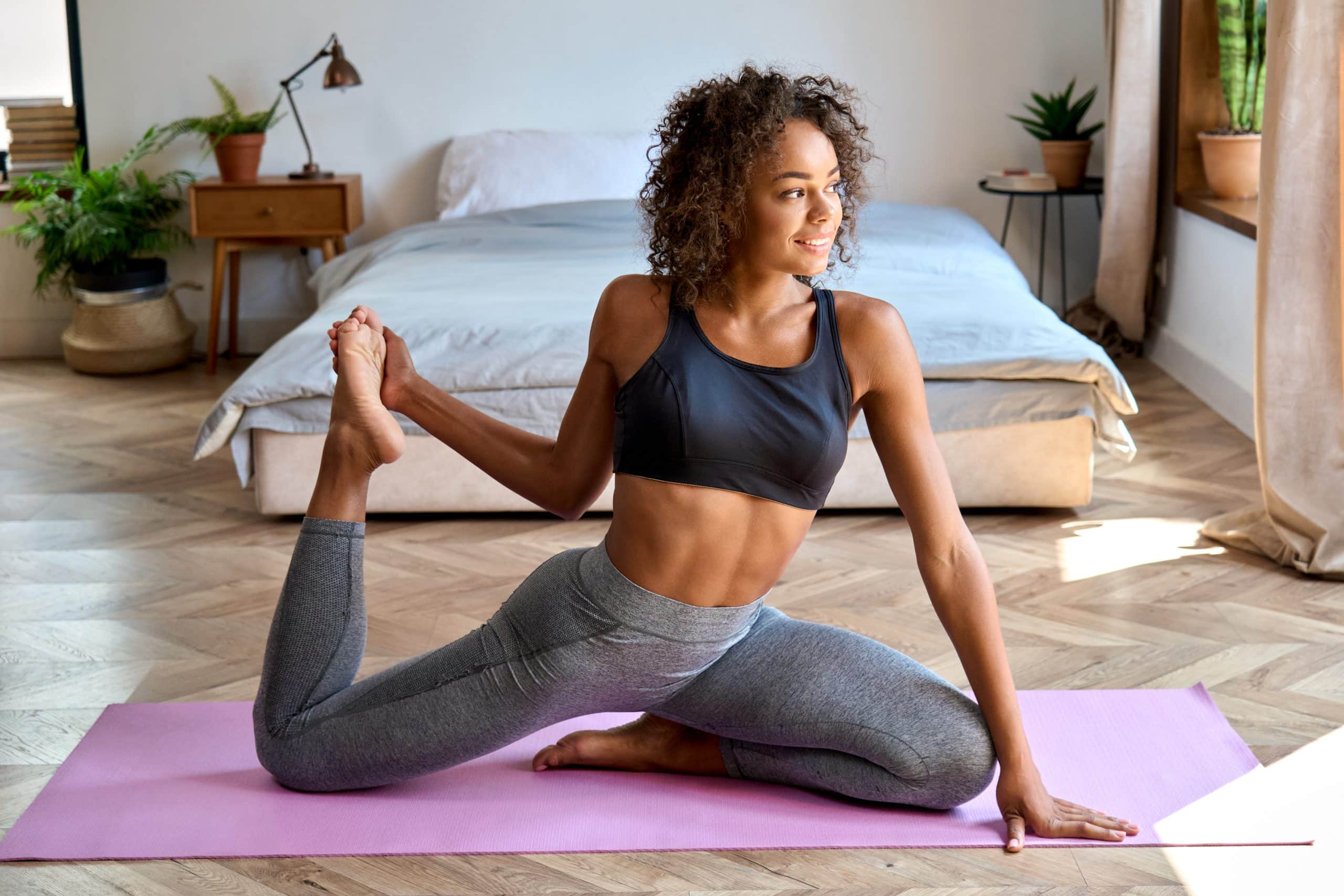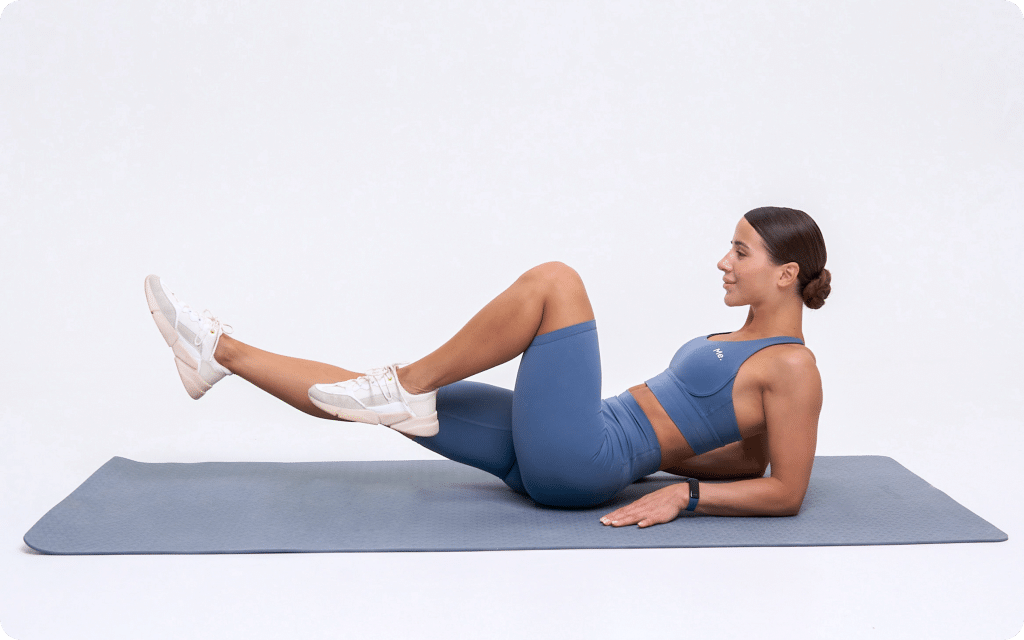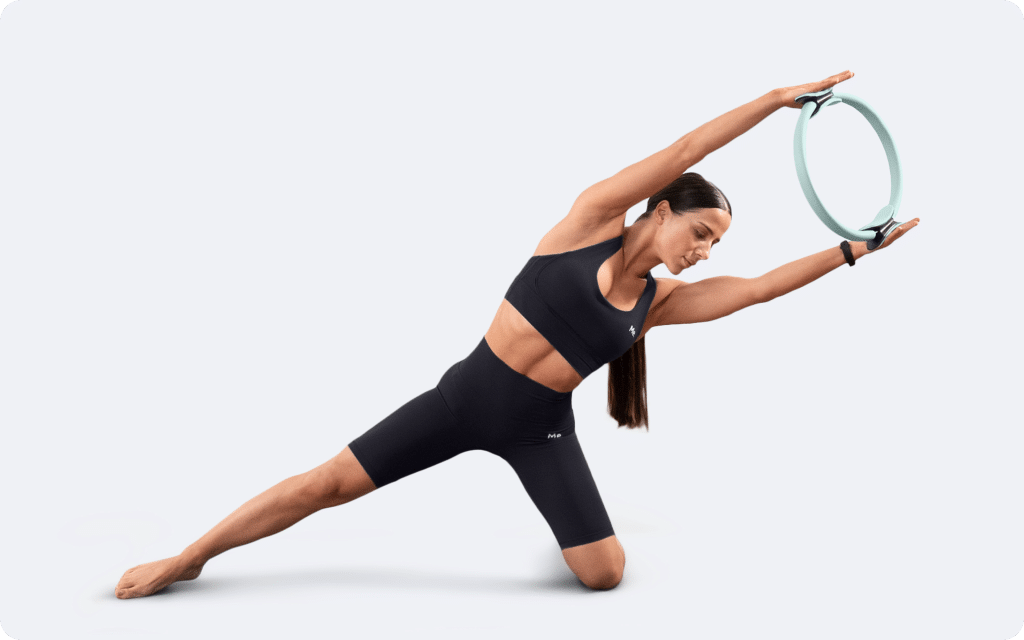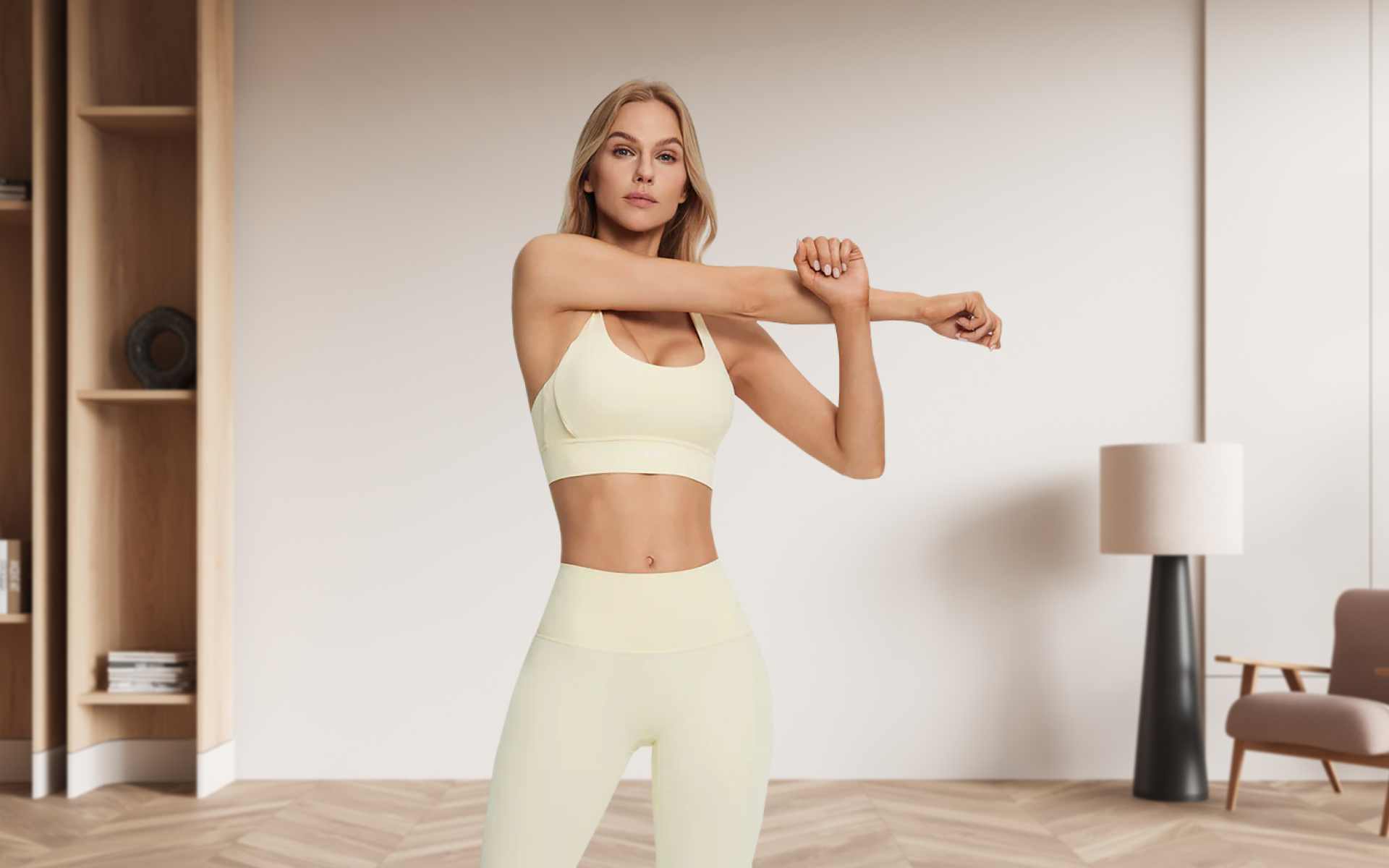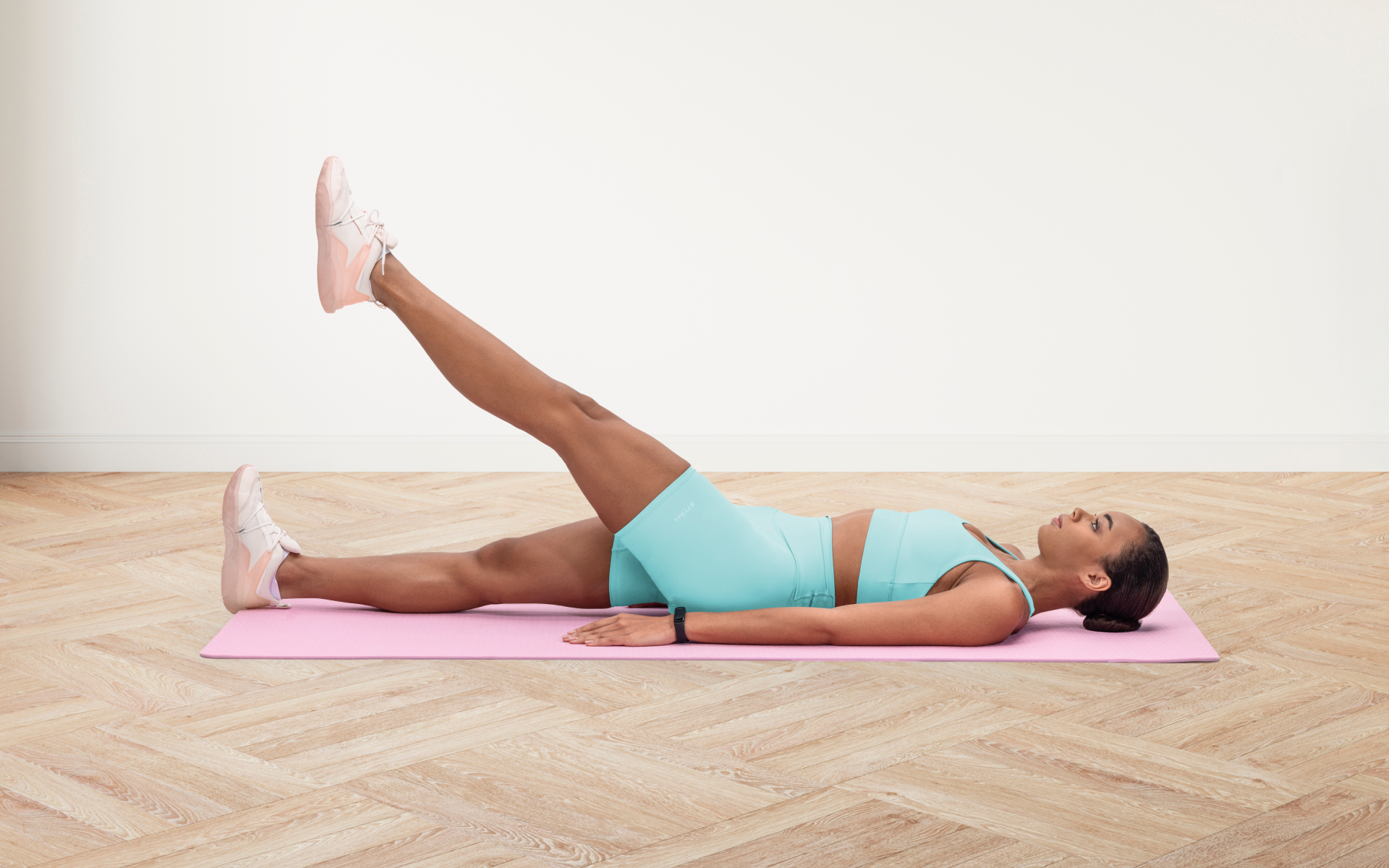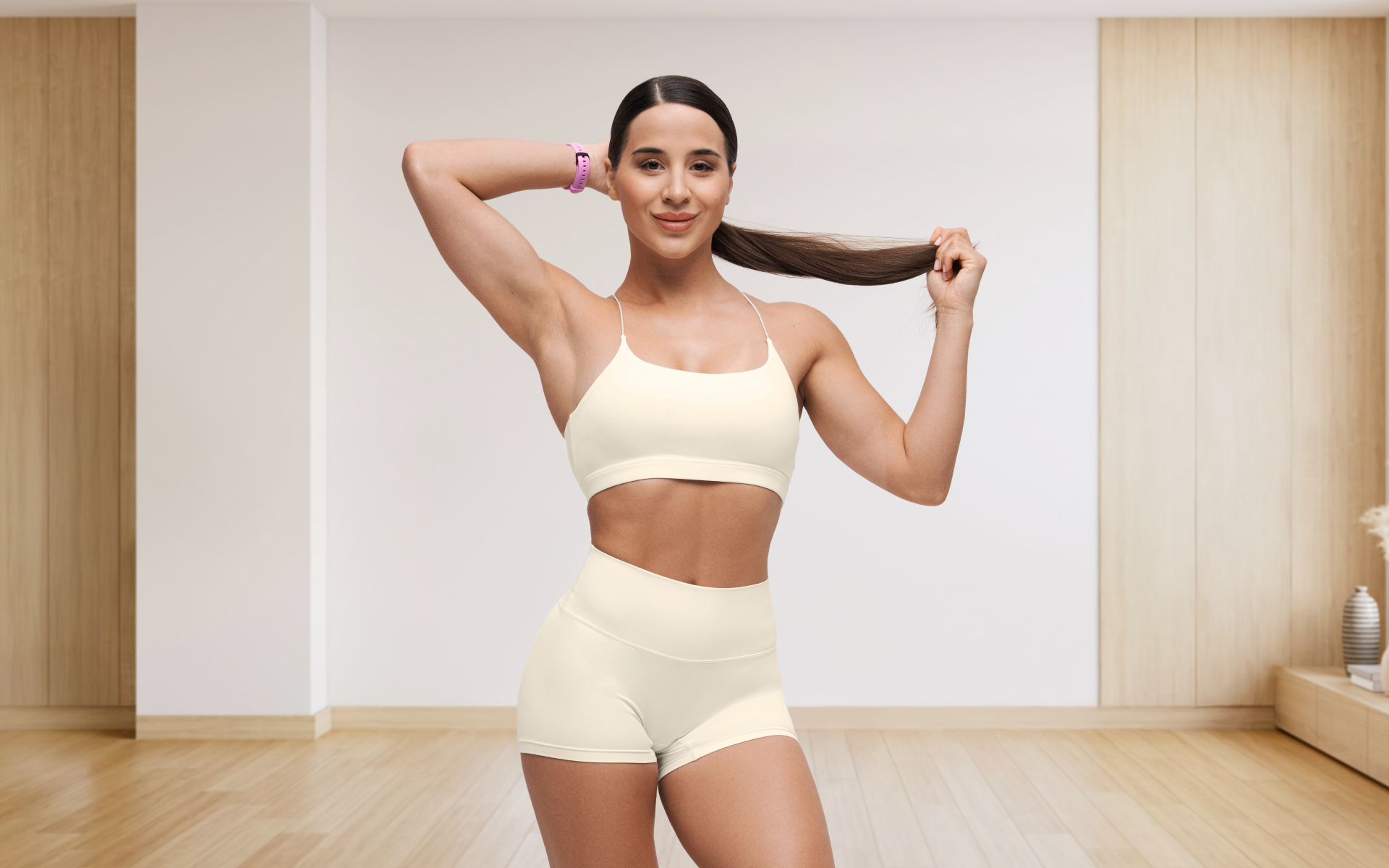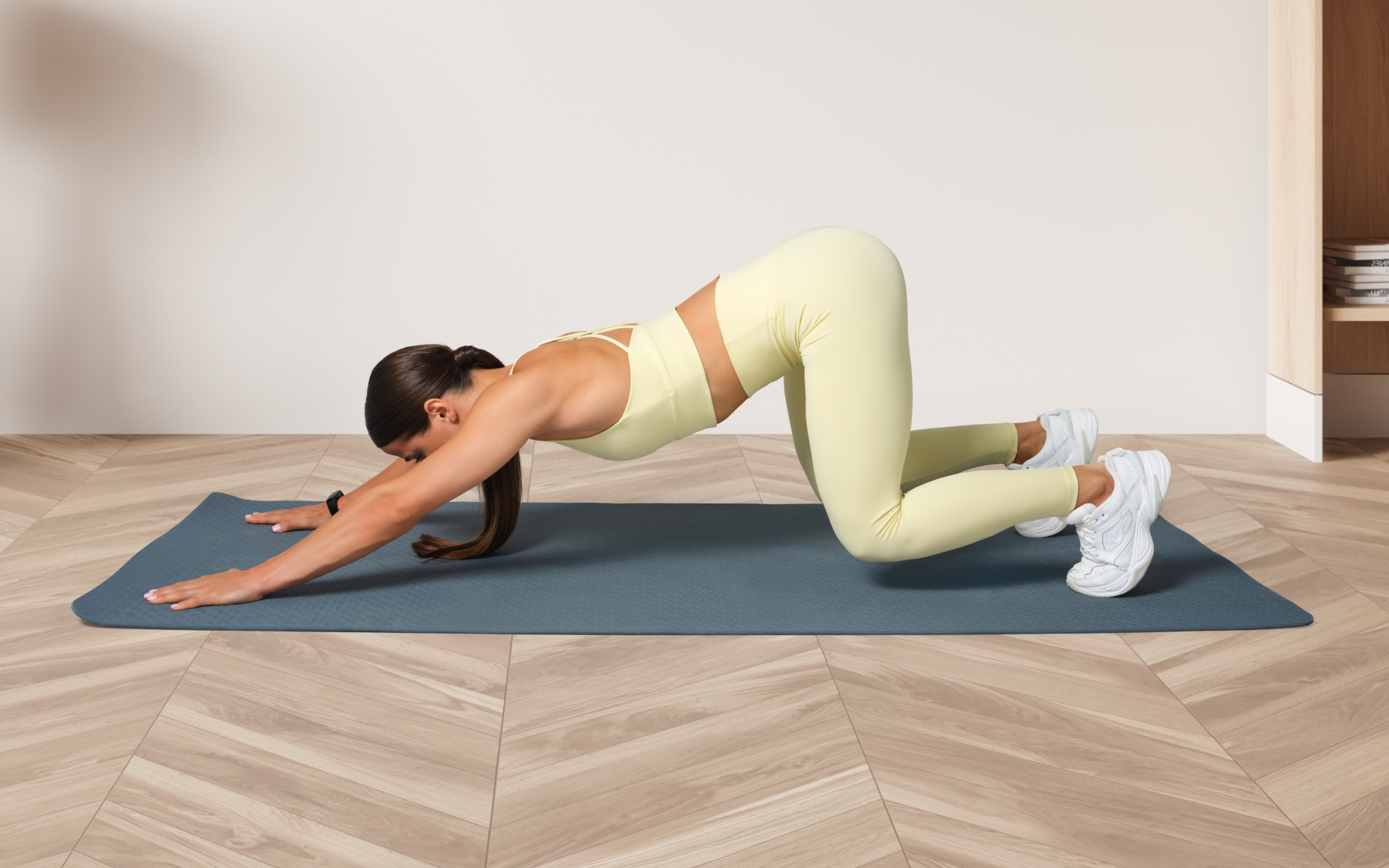Our legs are obviously an important part of our bodies, not only for mobility and strength but also for aesthetic purposes. Many people strive to have toned and lean legs, but this can be challenging to achieve without knowing the right exercises.
Pilates is an excellent way to work on your leg muscles without putting too much strain on them. It focuses on controlled movements and proper form, making it suitable for all fitness levels.
Here are eight must-have Pilates exercises for lean and toned legs. We’ll also talk about whether or not Pilates can help lose leg fat, how much strength you can gain from Pilates, and how often you should do these exercises.
Is Pilates Good for Developing Your Legs?
Pilates is good for developing your legs because it can help:
1. Tone
Pilates exercises target specific muscles in the legs, such as the quadriceps, hamstrings, and glutes (1). With regular practice, these muscles become stronger and more defined, resulting in toned legs.
2. Improve Flexibility
Flexibility is vital for good leg health. Pilates movements involve stretching and lengthening of muscles, which can improve flexibility over time (2).
3. Increase Strength
While Pilates may not provide the same level of strength training as weightlifting or resistance training, it still offers significant strength benefits for your legs. The controlled movements help activate and engage different muscle groups to build overall strength (3).
4. Prevent Injury
By strengthening and improving flexibility in the legs, Pilates can help prevent injuries such as strains or sprains. It also promotes proper alignment and balance, which reduces the risk of falls and other accidents (4).
5. Enhance Posture
Many leg exercises in Pilates involve engaging the core muscles to support the body’s posture and balance (3). Improved posture not only makes you look taller and more confident but also helps alleviate any back pain caused by poor posture (5).
BetterMe: Health Coaching app helps you achieve your body goals with ease and efficiency by helping to choose proper meal plans and effective workouts. Start using our app and you will see good results in a short time.
Can You Lose Leg Fat with Pilates?
Pilates is a low-impact exercise that focuses on muscle toning rather than weight loss. While it may contribute to overall weight loss through calorie burning, it is not specifically effective for losing leg fat.
To lose leg fat, you should:
Create a Calorie Deficit Through Diet
There’s no way around it – to lose fat, you need to consume fewer calories than your body burns. There are many ways to create a calorie deficit (6), but the simplest is to reduce your calorie intake through a balanced, healthy diet (7). Intermittent fasting, low carb diets, and other dietary plans may also help with fat loss (6).
Support Your Deficit With Exercise
Pairing a healthy diet with regular exercise is the most effective way to lose fat and maintain muscle mass (7). Exercise will either tap into readily available glycogen stores or look to stored fat as an energy source. Incorporating aerobic exercises, such as running and cycling, into your routine can help burn more calories and contribute to greater weight loss.
Add in Pilates To Tone and Strengthen
Pilates can help tone and strengthen the leg muscles, making them appear leaner. As you build muscle through Pilates, your metabolism can increase, which should also contribute to fat loss.
Read more: Wall Pilates Challenge: Using Wall As Your Workout Buddy
Can Pilates Strengthen My Legs?
Pilates exercises, with their focus on sustained, controlled actions, primarily engage slow-twitch fibers, promoting muscle endurance and stability. While it does not provide the same level of strength training as weightlifting, Pilates can still significantly increase leg strength, making everyday activities such as walking and climbing stairs easier.
Is Pilates Good for Toning Inner Thighs?
Yes, Pilates can be an effective way to tone and strengthen your inner thighs. Many Pilates exercises involve engaging the adductor muscles, which are responsible for leg movements such as bringing your legs together or crossing them. By targeting these muscles through controlled movements, Pilates can help tone and define the inner thighs.
How Often Should You Do These Exercises?
The frequency of your Pilates practice depends on your fitness goals and schedule. Ideally, you should aim for at least two to three sessions a week to see noticeable improvement in muscle tone and strength. However, if you’re looking to lose fat or want quicker results, we recommend increasing the frequency to five days a week. Start slow and gradually build up your practice over time for best results.
Which Are The Best Pilates Exercises for Legs?
The best Pilates exercises for legs engage multiple muscle groups and promote proper form and alignment. Here are our top eight picks for toning and strengthening your legs:
Scissors
The Scissors exercise primarily targets the hip flexors, quadriceps, hamstrings, and adductors. By engaging these muscle groups, you work on increasing flexibility and strengthening the legs through controlled movements.
The Scissors movement pattern mimics a “scissoring” action, which enhances the coordination required for various leg activities.
This is particularly beneficial for developing your legs through Pilates if you are a beginner, as it helps to build a solid foundation in leg strength. As you practice, you may notice significant improvements when seeing your Pilates legs before and after.
Steps to Perform Scissors:
- Start by lying on your back with your arms extended alongside your body, palms facing down.
- Engage your core and press your lower back into the mat.
- Lift your legs off the ground to a 45-degree angle, keeping them straight.
- Slowly lower your right leg toward the floor while raising your left leg, keeping both legs straight.
- Switch the position of your legs, like scissors crossing and uncrossing.
- Continue alternating legs in a controlled manner, focusing on muscle engagement.
- Maintain stable breathing, exhaling as you switch legs.
- Repeat for 8-10 repetitions on each leg, ensuring smooth transitions.
Bridge
The Bridge exercise engages the glutes, hamstrings, and lower back, promoting strength and stability. This movement pattern of lifting and lowering the hips improves muscle activation in the posterior chain, vital for everyday activities and athletic performance.
Performing the Bridge regularly allows you to explore some of the best Pilates exercises for developing your legs, as it can contribute to a firmer, more toned appearance, particularly in the glutes and thighs.
Steps to Perform Bridge:
- Lie on your back with your knees bent and feet flat on the floor, hip-width apart.
- Place your arms at your sides, palms facing down.
- Engage your core and press your feet into the mat.
- Inhale deeply, and as you exhale, lift your hips towards the ceiling while squeezing your glutes.
- Hold the bridge position for a few seconds, maintaining a straight line from your knees to your shoulders.
- Inhale as you lower your hips back down to the mat, controlling the descent.
- Repeat for 10-15 repetitions, focusing on smooth, even movements.
- Aim to engage your hamstrings by pressing through your heels as you lift.
Side Leg Lift with Bent Knee
The Side Leg Lift with Bent Knee effectively targets the glutes and hip abductors. By focusing on these muscle groups, this exercise supports improved lateral stability and enhances overall leg strength.
Steps to Perform Side Leg Lift with Bent Knee:
- Start by lying on your side with your knees bent at a 90-degree angle, stacking your hips.
- Position your bottom arm under your head for support, and rest your top hand on your hip.
- Engage your core and make sure your spine is in a neutral position.
- Lift your top leg, bending it at the knee, and bring it toward your hip.
- Exhale as you lift your knee toward the ceiling, keeping your foot behind the supporting leg.
- Inhale as you lower your knee back to the starting position, controlling the movement.
- Repeat for 10-12 repetitions on this side, then switch to the other side.
- Always be mindful of proper alignment and avoid overarching your back during the movements.
Reasons why BetterMe is a safe bet: a wide range of calorie-blasting workouts, finger-licking recipes, 24/7 support, challenges that’ll keep you on your best game, and that just scratches the surface! Start using our app and watch the magic happen.
Side Leg Lift with Straight Leg
This exercise focuses on the glutes, quadriceps, and hip stabilizing muscles. Engaging these muscles helps enhance your overall stability and coordination. Those who continue to practice it may find Pilates exercises for legs not only effective but fun as well.
Steps to Perform Side Leg Lift with Straight Leg:
- Begin by lying on your side, legs extended, and toes pointed.
- Use your bottom arm to support your head and stack your hips.
- Engage your core and align your body in a straight line from head to heels.
- Inhale deeply and as you exhale, lift your top leg directly up without moving your torso.
- Keep your leg straight and flex your foot while lifting.
- Hold the leg at the top for a moment to feel the muscles engage.
- Slowly lower your leg back down to the starting position while maintaining control.
- Perform 10-15 repetitions, being mindful of maintaining proper alignment throughout the exercise.
One Leg Teaser
The One Leg Teaser is an advanced Pilates exercise that engages the core, hip flexors, and quads. This dynamic movement pattern challenges balance and coordination while working on flexibility and strength.
By lifting one leg while simultaneously rolling the torso up, you’re incorporating stability and control, which are essential for building strength in the legs. As part of a Pilates leg workout at home, this exercise promotes slim legs through improved muscle definition and strength .
Steps to Perform One Leg Teaser:
- Start by lying on your back with your knees bent and feet flat on the floor.
- Engage your core and press your lower back into the mat.
- Extend your right leg straight up toward the ceiling, keeping it engaged.
- Inhale deeply; as you exhale, lift your head, shoulders, and upper back off the mat.
- Reach your arms forward, parallel to your extended leg.
- Maintain a strong core as you balance on your sitting bones.
- Hold the position briefly before rolling back down gently.
- Repeat for 5-8 repetitions on each leg, focusing on smooth, controlled movements.
Glute Bridge Pulses
Glute Bridge Pulses build on the traditional Glute Bridge by adding small pulsating movements at the top of the bridge. This modification targets the glutes and hamstrings more intensely, enhancing muscle engagement and endurance.
The repetitive pulsing allows for increased time under tension, crucial for developing strength and stability in the lower body. It’s an integral part of any Reformer Pilates leg workout with weights, contributing to firmer, toned legs.
Steps to Perform Glute Bridge Pulses:
- Lie on your back with your knees bent and feet hip-width apart, flat on the floor.
- Position your arms at your sides, palms down.
- Engage your core, pressing your feet into the mat.
- Inhale, then exhale as you lift your hips into the bridge position, squeezing your glutes at the top.
- Hold this position for a moment, maintaining alignment.
- Pulse your hips upward slightly for 10-15 counts, maintaining glute engagement.
- Inhale deeply, then lower your hips back down to the starting position.
- Repeat for 10-12 repetitions, focusing on the controlled pulsing motion.
Inner Thigh Lift
The Inner Thigh Lift specifically targets the adductor muscles of the inner thighs, enhancing strength and stability. This exercise not only tones the inner thigh area but also promotes better balance. Engaging these muscles during the lift reinforces proper alignment and muscle coordination, which can result in slim legs when integrated into a regular Pilates leg workout. Strengthening the inner thighs supports better performance in various activities, whether it be Pilates or daily movements.
Steps to Perform Inner Thigh Lift:
- Lie on your side with your legs extended, stacking your hips.
- Bend the top leg and place your foot on the floor in front of the bottom leg.
- Make sure your core is engaged and your body remains straight.
- Inhale, then exhale as you lift the bottom leg off the ground, keeping it straight.
- Hold the lift for a moment to engage the inner thigh muscles fully.
- Slowly lower the leg back down without letting it touch the ground.
- Repeat for 10-15 repetitions, then switch sides.
- Keep movements controlled and focus on the muscle contraction throughout.
Swimming
Swimming is a full-body exercise that promotes coordination, core strength, and leg flexibility. This dynamic movement pattern involves alternate arm and leg lifts, which engage the glutes, hamstrings, and lower back. By integrating a motion that requires oppositional movement, you’re enhancing overall body balance and stabilization. Including swimming in your Pilates leg workout adds an element of cardiovascular fitness, making it an excellent choice for a well-rounded routine.
Steps to Perform Swimming:
- Lie face down on your mat with your arms extended in front of you and legs straight behind.
- Engage your core, pressing your pelvis into the mat.
- Inhale deeply; as you exhale, lift your right arm and left leg simultaneously off the mat.
- Maintain a neutral spine, focusing on engaging your core as you lift.
- Alternate by lowering your right arm and left leg while lifting your left arm and right leg.
- Continue to alternate arms and legs in a smooth, controlled fashion.
- Breathe rhythmically, inhaling during lifts and exhaling during releases.
- Repeat for 10-15 repetitions, making sure your movements are fluid and maintaining proper alignment.
Read more: Wall Pilates Exercises: Step-by-Step Instructions & Tips
FAQs
Can Pilates Change Your Body Shape?
Your body shape is determined by a combination of genetics, lifestyle, and exercise. Pilates can improve muscle tone, flexibility, and posture, which can contribute to a leaner appearance (3). Combining regular Pilates practice with diet and exercise should have a positive impact on body shape, but it cannot fundamentally change your bone structure or genetic predisposition.
Who Should Not Do Pilates?
People who have health concerns should consult with their doctor before starting a Pilates practice. Pregnant women, people with acute injuries or chronic pain, and those with certain medical conditions may need to modify exercises or avoid specific movements altogether. A certified Pilates instructor can offer modifications and guidance for individuals with health concerns.
Does Pilates Tone Your Body Quickly?
Pilates isn’t a quick-fix workout; it takes time and consistency to see results just like all other types of exercise. Most exercises are challenging and require proper form and muscle engagement for effectiveness.
With regular practice, you may start to feel more toned within a few weeks, but visible changes in your body may take longer. Consistency is key with Pilates; the more you do it, the better the results.
Why Do My Legs Hurt After Pilates?
Feeling soreness in your legs after a Pilates session is quite common and is usually due to a phenomenon known as delayed onset muscle soreness (DOMS). This type of soreness typically occurs after engaging in new or intense physical activity, as your muscles are adapting to the stress of the exercises (8).
DOMS is a natural response that results from microscopic tears in muscle fibers, which occur during physical activity. As these fibers repair, muscles become stronger. The soreness usually manifests about 24 hours after exercise and can last a few days (8).
For beginners or those increasing their workout intensity, it’s not unusual to experience some discomfort as the muscles are challenged in new ways.
To alleviate soreness, consider the following tips:
- Stretching: Incorporating gentle stretches before and after your Pilates session can help maintain flexibility and reduce muscle tension.
- Hydration: Drinking plenty of water aids in muscle recovery and helps flush out toxins that may contribute to soreness.
- Rest and Recovery: Allow your muscles time to heal by incorporating rest days into your routine. Listen to your body and avoid overexertion.
- Proper Form: Correct form during exercises is crucial to prevent unnecessary strain and injury. If you’re unsure, consider working with a certified Pilates instructor to guide you.
That said, you should know the difference between normal muscle soreness and pain. If you experience sharp or severe pain, stop the exercise immediately and consult with a medical professional.
The Bottom Line
Incorporating Pilates leg exercises into your workout routine can have numerous benefits for both physical appearance and overall health. It’s essential to focus on proper technique, engage the correct muscles, and challenge yourself, while still listening to your body’s limits.
By integrating these three Pilates leg workouts into your weekly routine, along with a healthy diet and regular exercise, you can strengthen your legs, improve balance and coordination, enhance overall body tone, and feel more confident in your own skin.
DISCLAIMER:
This article is intended for general informational purposes only and does not serve to address individual circumstances. It is not a substitute for professional advice or help and should not be relied on for making any kind of decision-making. Any action taken as a direct or indirect result of the information in this article is entirely at your own risk and is your sole responsibility.
BetterMe, its content staff, and its medical advisors accept no responsibility for inaccuracies, errors, misstatements, inconsistencies, or omissions and specifically disclaim any liability, loss or risk, personal, professional or otherwise, which may be incurred as a consequence, directly or indirectly, of the use and/or application of any content.
You should always seek the advice of your physician or other qualified health provider with any questions you may have regarding a medical condition or your specific situation. Never disregard professional medical advice or delay seeking it because of BetterMe content. If you suspect or think you may have a medical emergency, call your doctor.
SOURCES
- Pilates – health benefits (2022, betterhealth.vic.gov.au
- Effects of Pilates on health and well-being of women: a systematic review (2023, springeropen.com)
- Pilates: how does it work and who needs it? (2011, ncbi.nlm.nih.gov)
- Pilates Based Exercise in Muscle Disbalances Prevention and Treatment of Sports Injuries (2012, researchgate.net)
- 4 ways to turn good posture into less back pain (2020, health.harvard.edu)
- Optimal Diet Strategies for Weight Loss and Weight Loss Maintenance (2021, ncbi.nlm.nih.gov)
- Weight loss – a healthy approach (2024, betterhealth.vic.gov.au)
- Muscle Soreness & DOMS: How to Prevent & Treat Sore Muscles – NASM (n.d., blog.nasm.org)
